5 Critical Warning Signs Your Crankshaft Is Failing
关于作者:
The author is a seasoned automotive expert with over a decade of experience specializing in engine diagnostics and repair. Holding certifications in advanced engine systems, they have a deep understanding of critical components like the crankshaft and the common causes of engine failure. Their expertise lies in identifying early warning signs and advising on effective repair strategies to prolong engine life and performance.
```The crankshaft is, without exaggeration, the backbone of your engine. It's the component that translates the linear motion of the pistons into rotational motion, ultimately powering your vehicle's wheels. Given its absolutely critical role and the immense forces it withstands, any sign of trouble with the crankshaft is a major red flag. Ignoring these warning signs can lead to catastrophic engine failure, which, frankly speaking, is one of the most expensive repairs a car owner can face. Recognizing the early indicators is paramount to potentially saving your engine – and your wallet.
To be honest, many drivers might not even know what a crankshaft is, let alone the signs it's failing. But understanding these critical signals is vital for proactive maintenance. Let's delve into the five most important warning signs you should never ignore.
Unusual Engine Noises: A Critical Crankshaft Warning Sign
One of the most common and, frankly, alarming indicators of potential internal engine trouble, including crankshaft issues, is the presence of unusual noises. We're not talking about a little squeak from a belt or the normal hum of the engine. We're talking about distinct, often metallic, sounds coming from within the engine block itself. Specifically, a deep knocking or tapping noise that seems to be synchronized with the engine's RPM is a classic sign that something is seriously wrong with the rotating assembly, and the crankshaft is right at the heart of that assembly.
Why does a failing crankshaft cause knocking? Often, this noise originates from worn crankshaft bearings. The crankshaft spins within these bearings, and if they become worn, loose, or damaged, the crankshaft can move excessively within its bore. This play causes the crankshaft or connecting rods to strike against other internal components, producing that telltale knocking sound. Interestingly enough, the pitch and frequency of the knock can sometimes offer clues about the severity and location of the issue, but any persistent internal knocking should be treated as an emergency.
This isn't a noise you can ignore. A slight tap might escalate into a loud, persistent knock very quickly. Continuing to run an engine with this kind of noise risks further damage to the crankshaft itself, the connecting rods, the engine block, and pretty much everything else connected to the rotating assembly. It's a critical warning sign because it indicates physical contact and wear that is rapidly deteriorating essential components.
Have you ever heard an engine making a sound like someone is hitting it with a hammer? That distinct, rhythmic knock could very well be your crankshaft crying for help. Addressing this immediately is crucial.
The Alarming Drop: Low Oil Pressure and Crankshaft Failure
Engine oil is the lifeblood of your engine, and maintaining adequate oil pressure is absolutely essential for proper lubrication, especially for high-load components like the crankshaft and its bearings. A sudden or persistent drop in oil pressure, indicated by your dashboard gauge or warning light, is a critical warning sign that can point directly to crankshaft-related problems.
How is low oil pressure linked to a failing crankshaft? The crankshaft bearings rely on a thin film of pressurized oil to prevent metal-on-metal contact. This oil film is maintained by the engine's oil pump, but the pressure is also dependent on the clearances within the engine's moving parts. If the crankshaft bearings are severely worn, the clearance between the crankshaft journals and the bearings increases significantly. This increased clearance allows oil to escape from the pressurized area around the bearings too quickly, leading to a dramatic drop in overall oil pressure throughout the engine, particularly noticeable at idle or low RPMs.
A lack of sufficient oil pressure means the crankshaft bearings are no longer adequately lubricated. This results in increased friction, heat, and accelerated wear, creating a vicious cycle that rapidly damages the bearings and the crankshaft journals. It's a critical warning sign because insufficient lubrication is a direct path to catastrophic failure. Without that protective oil film, metal grinds against metal, generating immense heat and leading to seizing.
I've found that many drivers underestimate the importance of the oil pressure gauge or light. If that light comes on, or the gauge drops significantly, pull over as soon as it's safe. Continuing to drive with low oil pressure when it's caused by worn crankshaft bearings is almost certainly going to result in irreversible damage.
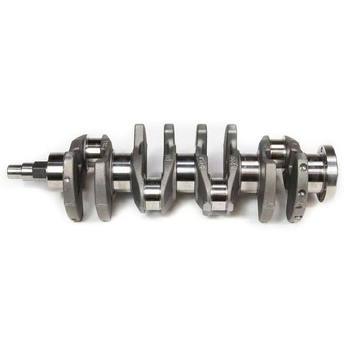
Metallic Clues: Finding Particles as a Crankshaft Warning Sign
When you change your engine oil, or perhaps when a mechanic is performing maintenance, the presence of visible metal particles in the old oil or on the drain plug magnet is a highly critical warning sign. While some minor metallic dust can be normal over a long oil change interval, finding larger flakes, shavings, or excessive amounts of fine glitter indicates significant wear occurring within the engine's lubricated components. And often, the crankshaft and its bearings are the primary culprits.
Where do these metal particles come from in the context of crankshaft failure? As crankshaft bearings wear down due to age, lack of lubrication (linking back to the previous point), or contamination, the soft bearing material (often a mix of metals like copper, lead, and tin) is scraped or flaked off. In severe cases, if the bearing material is completely worn through, the harder steel of the crankshaft journals can begin to wear, producing steel particles. Inspecting the oil and the oil filter can provide valuable insights into the health of the engine's internal components.
Finding metallic debris is a critical warning sign because it's direct evidence of metal-on-metal contact and material loss from essential engine components. It means the protective layers are gone, and the core structures are being ground away. These particles then circulate through the engine, potentially causing further damage to other parts, including the oil pump itself.
Frankly speaking, discovering significant metal in your engine oil is like finding bone fragments in your blood – it indicates a severe internal injury. It requires immediate investigation to determine the source, and worn crankshaft bearings or journals are high on the list of possibilities.
Excessive Vibration: A Telltale Sign of Crankshaft Distress
While some engine vibration is normal, especially in certain engine configurations, excessive or newly developed vibration can be a significant indicator of internal imbalance or damage. A failing crankshaft, or issues directly related to it like damaged connecting rods or flywheel problems, can manifest as noticeable and often alarming engine vibration.
How does crankshaft failure lead to vibration? The crankshaft is a precisely balanced component. Its design ensures smooth rotation despite the powerful, intermittent forces from the pistons. If the crankshaft itself is bent, cracked, or if one of its journals or counterweights is damaged due to bearing failure or other issues, its balance is compromised. This imbalance creates centrifugal forces that cause the entire engine to shake excessively. Similarly, if a connecting rod attached to the crankshaft fails or its bearing seizes, it can throw the rotating assembly out of balance, leading to severe vibration.
This is a critical warning sign because excessive vibration puts immense stress on the engine mounts, transmission, exhaust system, and other connected components. More importantly, the vibration itself can exacerbate the underlying problem, accelerating wear and increasing the risk of a catastrophic failure where the crankshaft could potentially break. It's a physical manifestation of the engine struggling due to internal instability.
Many experts agree that a sudden increase in engine vibration, especially if it worsens with RPM, should never be ignored. It's the engine telling you, quite forcefully, that something is fundamentally unbalanced inside.

Loss of Power & Stalling: Performance Issues Indicating Crankshaft Failure
While less specific than noises or metal particles, a noticeable loss of engine power, poor acceleration, rough idling, or frequent stalling can also be critical warning signs that, in conjunction with other symptoms, might point towards crankshaft failure. These performance issues arise when the engine's ability to produce and transfer power is compromised.
How can a failing crankshaft cause these performance problems? Severe wear on crankshaft bearings increases friction, making it harder for the engine to turn the crankshaft. This increased resistance saps power. Furthermore, if the crankshaft or connecting rods are damaged, it can affect the timing and efficiency of the piston movements, leading to misfires, uneven combustion, and a general reduction in engine output. In extreme cases, significant internal damage can prevent the engine from running smoothly at low speeds or even cause it to stall entirely.
These are critical warning signs because they indicate the engine is no longer functioning correctly. While many issues can cause power loss or stalling, when combined with symptoms like knocking or low oil pressure, they strongly suggest a deep-seated internal problem like crankshaft failure. Ignoring these could mean the engine is operating inefficiently and potentially causing further damage with every revolution.
It's worth noting that performance issues alone might not immediately scream "crankshaft!" but when you combine them with the other signs we've discussed – the noises, the oil pressure drop, the metal – the picture becomes much clearer and much more urgent. A struggling engine needs attention, and if these other signs are present, that struggle might be directly linked to a failing crankshaft.
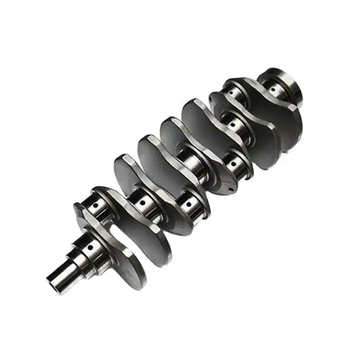
Recognizing these five critical warning signs – unusual knocking noises, a significant drop in oil pressure, the presence of metal particles in the oil, excessive engine vibration, and a noticeable loss of power or stalling – is absolutely essential for any vehicle owner. These aren't minor issues; they are indicators of potentially catastrophic internal damage, often centered around the crankshaft.
Acting quickly when you notice any of these signs can make the difference between a relatively contained repair (like replacing bearings if caught early enough) and needing a complete engine rebuild or replacement. Ignoring them is a gamble you will almost certainly lose.
If you experience any of these symptoms, it is imperative to have your vehicle inspected by a qualified mechanic as soon as possible. They can perform diagnostics, including checking oil pressure, examining the oil, and listening to the engine, to pinpoint the source of the problem.
Should your inspection reveal issues related to the crankshaft or its associated components, our company specializes in providing high-quality engine parts, including crankshafts, bearings, and connecting rods, designed to meet or exceed original specifications. We understand the precision required for these critical components and offer reliable solutions to get your engine running smoothly and powerfully again.
What steps do you currently take to monitor your engine's health? Have you ever experienced any of these warning signs in a vehicle you've owned?
For more detailed information, please visit our official website: 5 Critical Warning Signs Your Crankshaft Is Failing
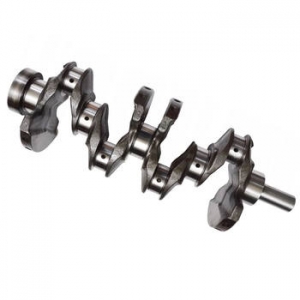 The Ultimate Guide to Getting
The Ultimate Guide to Getting
 The Unsung Heroes: Unveiling t
The Unsung Heroes: Unveiling t
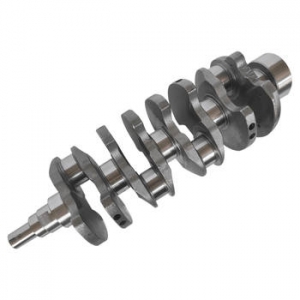 Unlocking Power: A Deep Dive i
Unlocking Power: A Deep Dive i
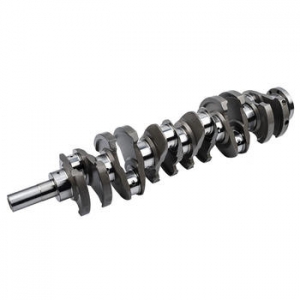 The Ultimate Industrial Cranks
The Ultimate Industrial Cranks
